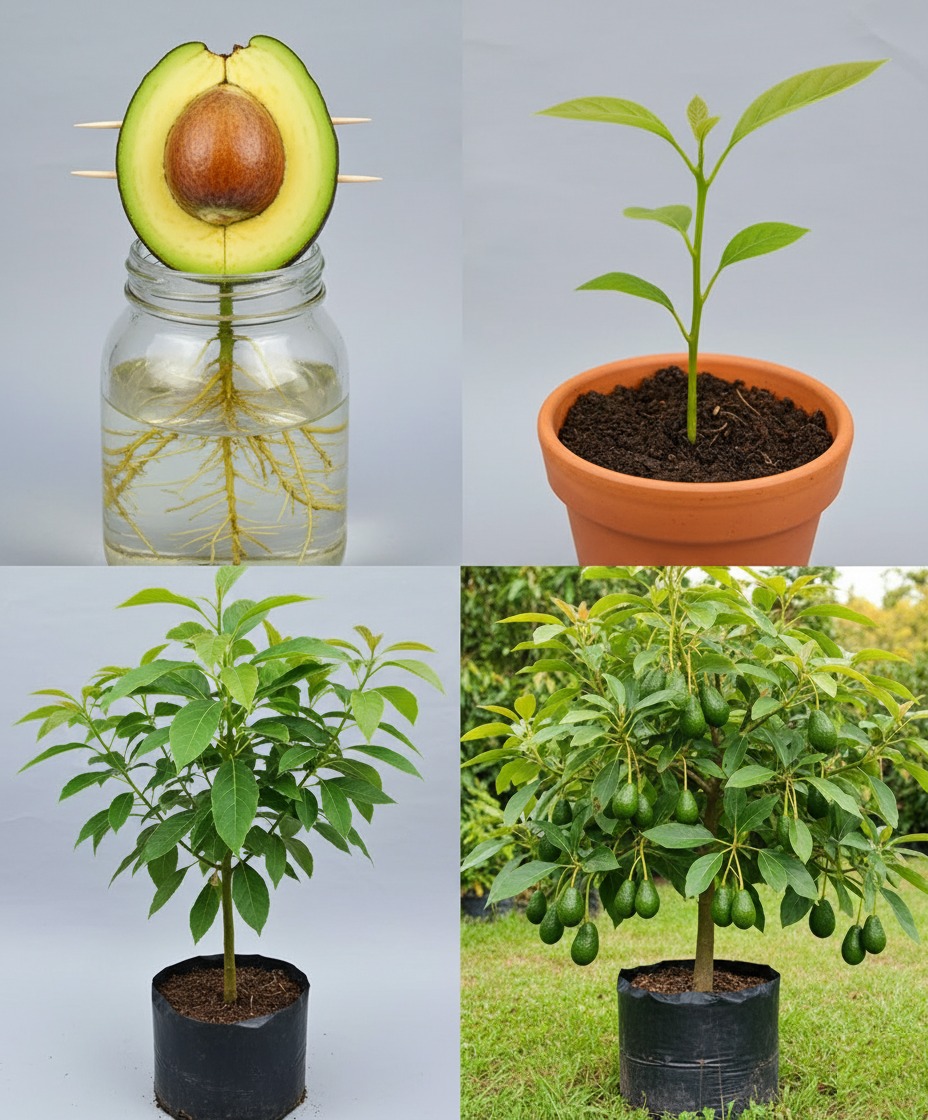


Soil: Slightly acidic to neutral soil (pH 6-7) with excellent drainage prevents root rot and supports nutrient uptake.
Water: Avocados prefer consistent moisture but dislike soggy soil. Water deeply and allow the soil surface to dry between watering.
If planting outdoors:
Choose a site with good air circulation to prevent fungal diseases.
Space trees 15-20 feet apart to give them room to grow.
Amend the soil with organic matter before planting.
Plant the tree at the same depth as it was in the pot, and water well after planting.
For container growing:
Use a large pot (at least 20 inches wide) with drainage holes.
Use a high-quality potting mix formulated for citrus or tropical plants.
Repot every 2-3 years as the tree grows.
To promote prolific and vibrant blooming throughout the year:
Feed your avocado tree with a balanced fertilizer rich in nitrogen, phosphorus, and potassium.
Use fertilizer formulated for fruit trees or citrus.
Apply fertilizer every 6-8 weeks during the growing season.
Incorporate micronutrients like zinc and iron to support flowering.
Consistent watering is key to avoiding stress, which can inhibit blooming.
Mulch around the base to conserve moisture and regulate soil temperature.
Avoid overwatering to prevent root diseases.
Prune your avocado tree annually to encourage new growth, which supports more flowers.
Remove dead or crossing branches to improve airflow and light penetration.
Light pruning can be done after harvest or in early spring.
Avocado flowers are unique with a two-stage opening (type A and type B flowering).
Planting both type A and type B avocado trees improves cross-pollination, increasing fruit set.
Alternatively, hand pollinate flowers to ensure better fertilization.
Protect your avocado tree from pests and diseases.
Avoid excessive fertilizer use, which can promote leaf growth over flowers.
Maintain stable growing conditions without drastic changes in light or temperature.
Leaf yellowing: Often due to nutrient deficiencies or poor drainage.
Flower drop: May be caused by drought stress, temperature extremes, or poor pollination.
Pests: Watch for mites, borers, or scales and treat with appropriate organic insecticides.
Root rot: Avoid waterlogged soil and improve drainage.
While vibrant blooms are exciting, the ultimate reward is fruit production. Depending on the variety, fruit may take 6-18 months to mature after flowering. Harvest avocados when they reach mature size but are still firm.
Use your homegrown avocados fresh in salads, smoothies, or homemade guacamole.
Growing an avocado tree that blooms vibrantly all year long requires a mix of the right variety, ideal growing conditions, and attentive care. Whether in your garden or a large container, providing consistent water, proper nutrition, and good light will encourage your avocado to flower repeatedly. With patience and dedication, your avocado tree will become a beautiful, productive centerpiece that offers both stunning blooms and delicious fruit year-round.